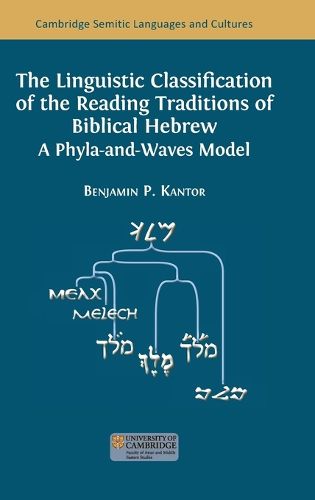Readings Newsletter
Become a Readings Member to make your shopping experience even easier.
Sign in or sign up for free!
You’re not far away from qualifying for FREE standard shipping within Australia
You’ve qualified for FREE standard shipping within Australia
The cart is loading…






This title is printed to order. This book may have been self-published. If so, we cannot guarantee the quality of the content. In the main most books will have gone through the editing process however some may not. We therefore suggest that you be aware of this before ordering this book. If in doubt check either the author or publisher’s details as we are unable to accept any returns unless they are faulty. Please contact us if you have any questions.
In recent decades, the field of Biblical Hebrew philology and linguistics has been witness to a growing interest in the diverse traditions of Biblical Hebrew. Indeed, while there is a tendency for many students and scholars to conceive of Biblical Hebrew as equivalent with the Tiberian pointing of the Leningrad Codex as it appears in Biblia Hebraica Stuttgartensia (BHS), there are many other important reading traditions attested throughout history.
Origen's Secunda reflects a late Roman reading tradition of Biblical Hebrew transcribed into Greek letters. Occasional transcriptions of Biblical Hebrew into Latin letters in Jerome's commentaries similarly reflect a reading tradition from early Byzantine Palestine. In the medieval period, alongside Tiberian Hebrew we also find the Babylonian tradition and the Palestinian tradition. The modern oral reading tradition of the Samaritan community also likely has roots in the Second Temple period.
Aside from these primary attestations of the reading traditions, there are a whole host of other modern reading traditions of Biblical Hebrew, from Ashkenazi, to Sephardi, and Yemenite. Despite the rich diversity of traditions of Biblical Hebrew at our fingertips, the linguistic relationship between them has never been mapped out. In this book, then, the phyla-and-waves methodology, which has been used for Semitic language classification, is used to map out the relationship between the main reading traditions of Biblical Hebrew throughout history.
$9.00 standard shipping within Australia
FREE standard shipping within Australia for orders over $100.00
Express & International shipping calculated at checkout
This title is printed to order. This book may have been self-published. If so, we cannot guarantee the quality of the content. In the main most books will have gone through the editing process however some may not. We therefore suggest that you be aware of this before ordering this book. If in doubt check either the author or publisher’s details as we are unable to accept any returns unless they are faulty. Please contact us if you have any questions.
In recent decades, the field of Biblical Hebrew philology and linguistics has been witness to a growing interest in the diverse traditions of Biblical Hebrew. Indeed, while there is a tendency for many students and scholars to conceive of Biblical Hebrew as equivalent with the Tiberian pointing of the Leningrad Codex as it appears in Biblia Hebraica Stuttgartensia (BHS), there are many other important reading traditions attested throughout history.
Origen's Secunda reflects a late Roman reading tradition of Biblical Hebrew transcribed into Greek letters. Occasional transcriptions of Biblical Hebrew into Latin letters in Jerome's commentaries similarly reflect a reading tradition from early Byzantine Palestine. In the medieval period, alongside Tiberian Hebrew we also find the Babylonian tradition and the Palestinian tradition. The modern oral reading tradition of the Samaritan community also likely has roots in the Second Temple period.
Aside from these primary attestations of the reading traditions, there are a whole host of other modern reading traditions of Biblical Hebrew, from Ashkenazi, to Sephardi, and Yemenite. Despite the rich diversity of traditions of Biblical Hebrew at our fingertips, the linguistic relationship between them has never been mapped out. In this book, then, the phyla-and-waves methodology, which has been used for Semitic language classification, is used to map out the relationship between the main reading traditions of Biblical Hebrew throughout history.